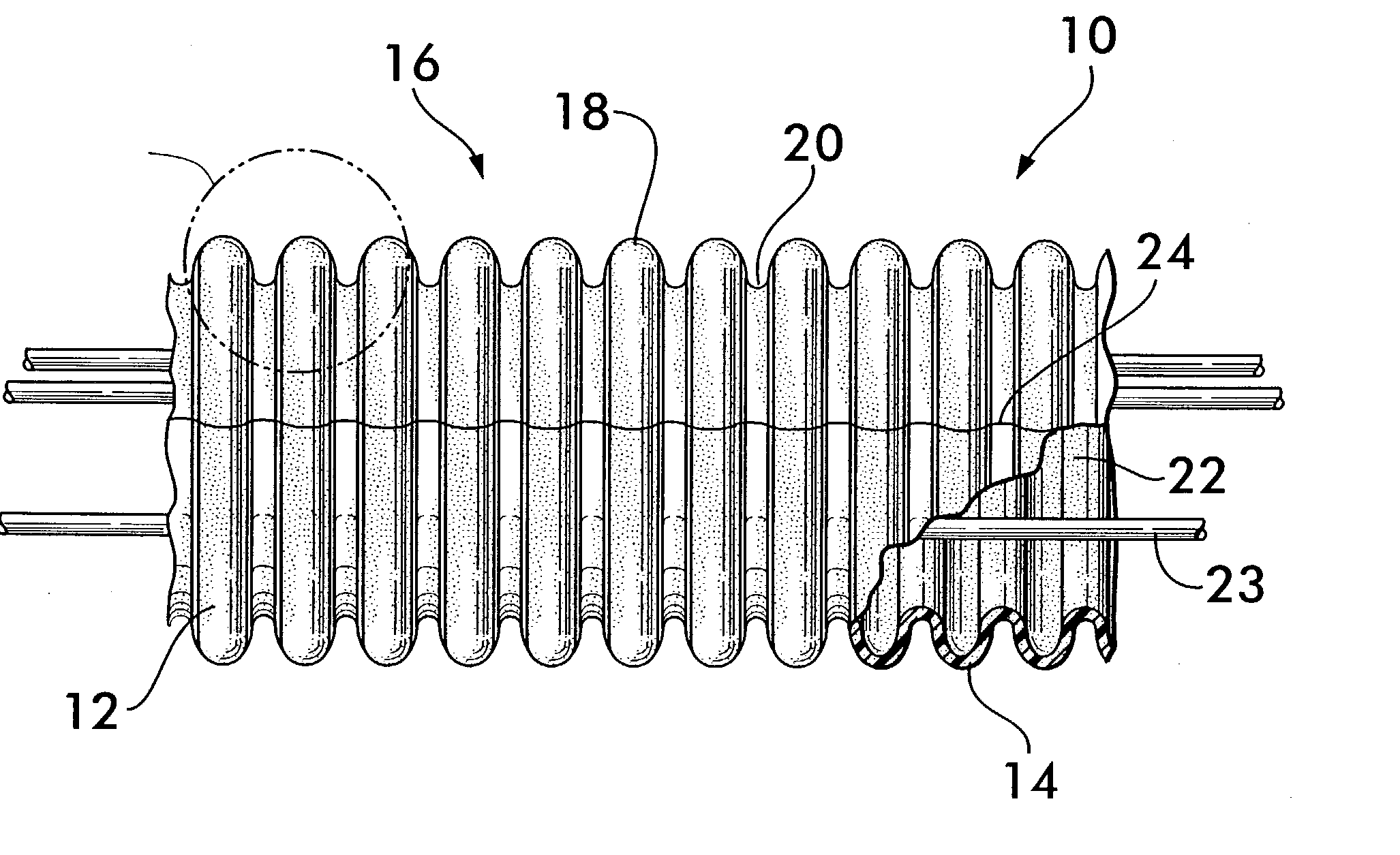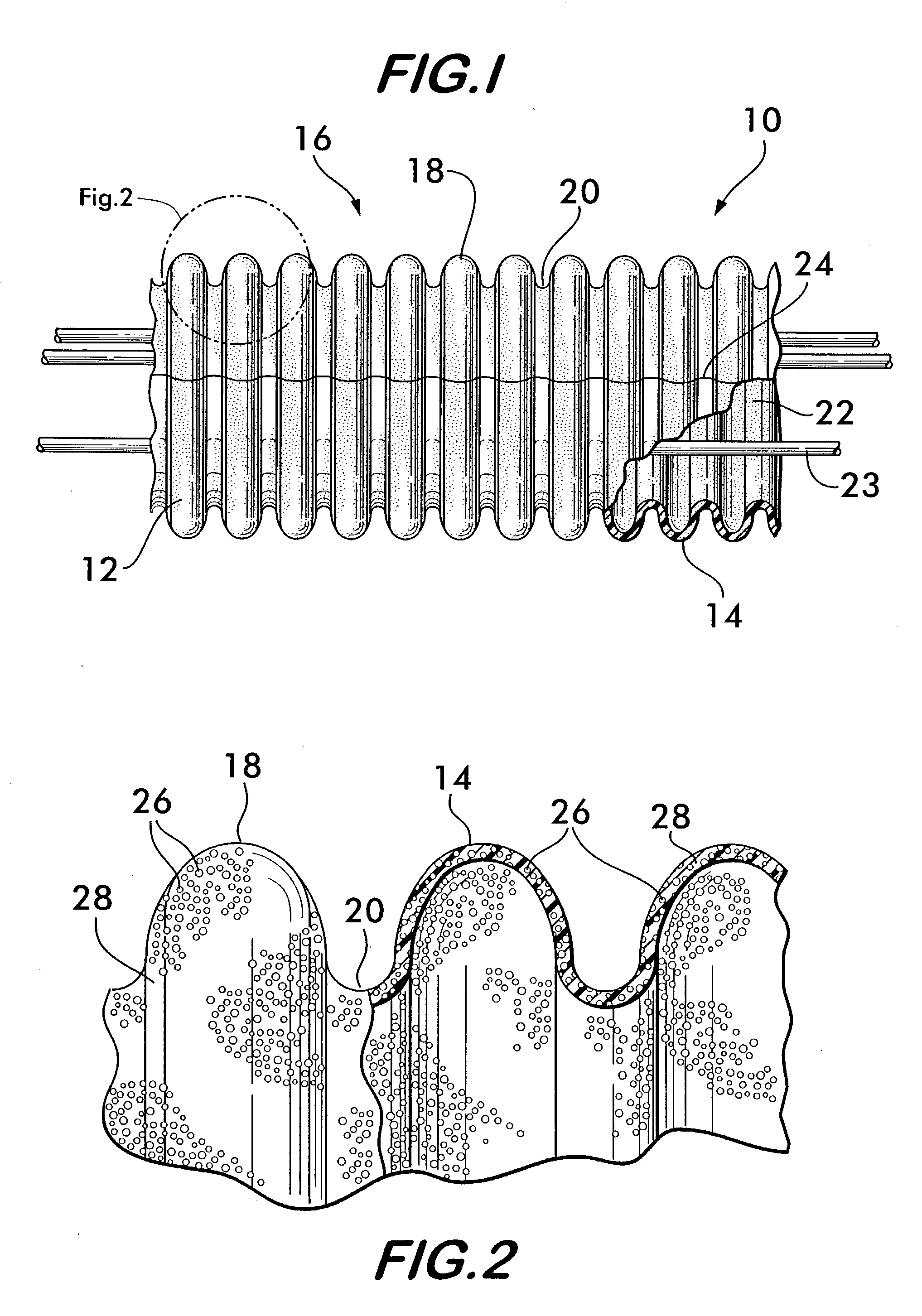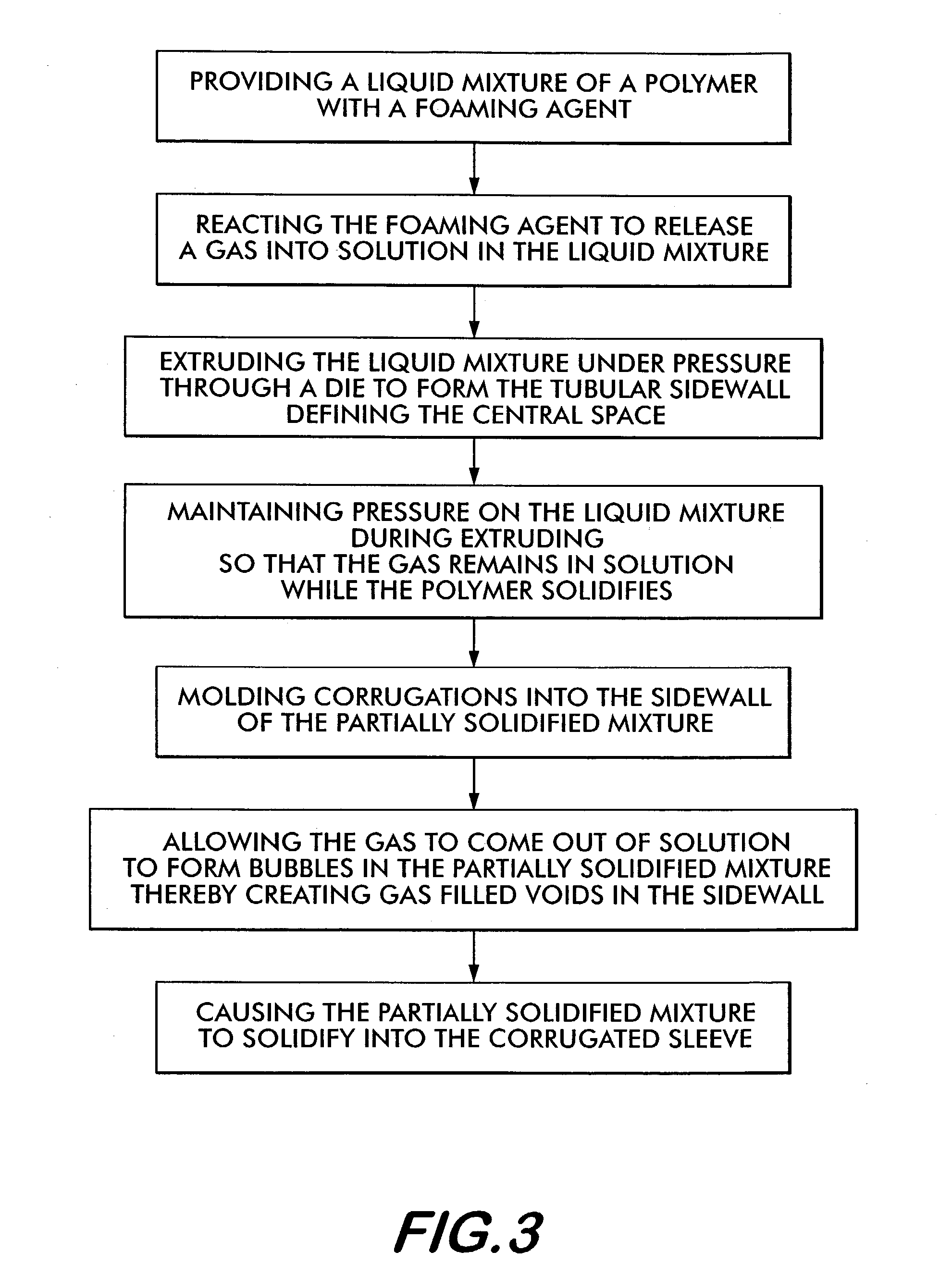Monolayer foamed corrugated sleeve
a foamed corrugated and foamed technology, applied in the field of sleeves, can solve the problems of elongated substrates such as wire harnesses, optical fibers and fluid conduits carrying fuel, compressed gas or hydraulic fluid, and are often subjected to harsh environments, including vibration, abrasion of wiring, short circuit or failure of wiring
- Summary
- Abstract
- Description
- Claims
- Application Information
AI Technical Summary
Benefits of technology
Problems solved by technology
Method used
Image
Examples
example 2
[0047] A monolayer foamed sleeve was produced having 91 wt % ethyl vinyl acetate, 4 wt % foaming agent and 5 wt % colorant. The ethyl vinyl acetate is a thermoplastic polyethylene with 28 wt % vinyl acetate as an additive. Sleeves having this formulation exhibit very good acoustic attenuation and are soft and flexible to the touch. Higher percentages of vinyl acetate additive increase the softness and the acoustic attenuation.
example 3
[0048] A monolayer foamed sleeve was produced comprising 66.5 wt % thermoplastic vulcanizate available under the commercial name "Sarlink", 28.5 wt % polyethylene, and 5 wt % foaming agent. The resultant sleeve is soft and flexible with excellent acoustic attenuation characteristics. Because of the relatively high percentage of thermoplastic vulcanizate, the sleeve has lower abrasion resistance than sleeves made from formulations having a greater percentage of polyethylene.
example 4
[0049] A monolayer foamed sleeve was produced comprising 47.5 thermoplastic vulcanizate, 47.5 wt % polyethylene and 5 wt % foaming agent. Sleeves made according to this formulation are harder than versions having more thermoplastic vulcanizate but still maintained good acoustic attenuation properties. The abrasion resistance provided by this formulation is markedly higher than formulations having a higher percentage of thermoplastic vulcanizate.
PUM
| Property | Measurement | Unit |
|---|---|---|
| Thickness | aaaaa | aaaaa |
| Pressure | aaaaa | aaaaa |
| Elastomeric | aaaaa | aaaaa |
Abstract
Description
Claims
Application Information
 Login to View More
Login to View More - R&D
- Intellectual Property
- Life Sciences
- Materials
- Tech Scout
- Unparalleled Data Quality
- Higher Quality Content
- 60% Fewer Hallucinations
Browse by: Latest US Patents, China's latest patents, Technical Efficacy Thesaurus, Application Domain, Technology Topic, Popular Technical Reports.
© 2025 PatSnap. All rights reserved.Legal|Privacy policy|Modern Slavery Act Transparency Statement|Sitemap|About US| Contact US: help@patsnap.com



